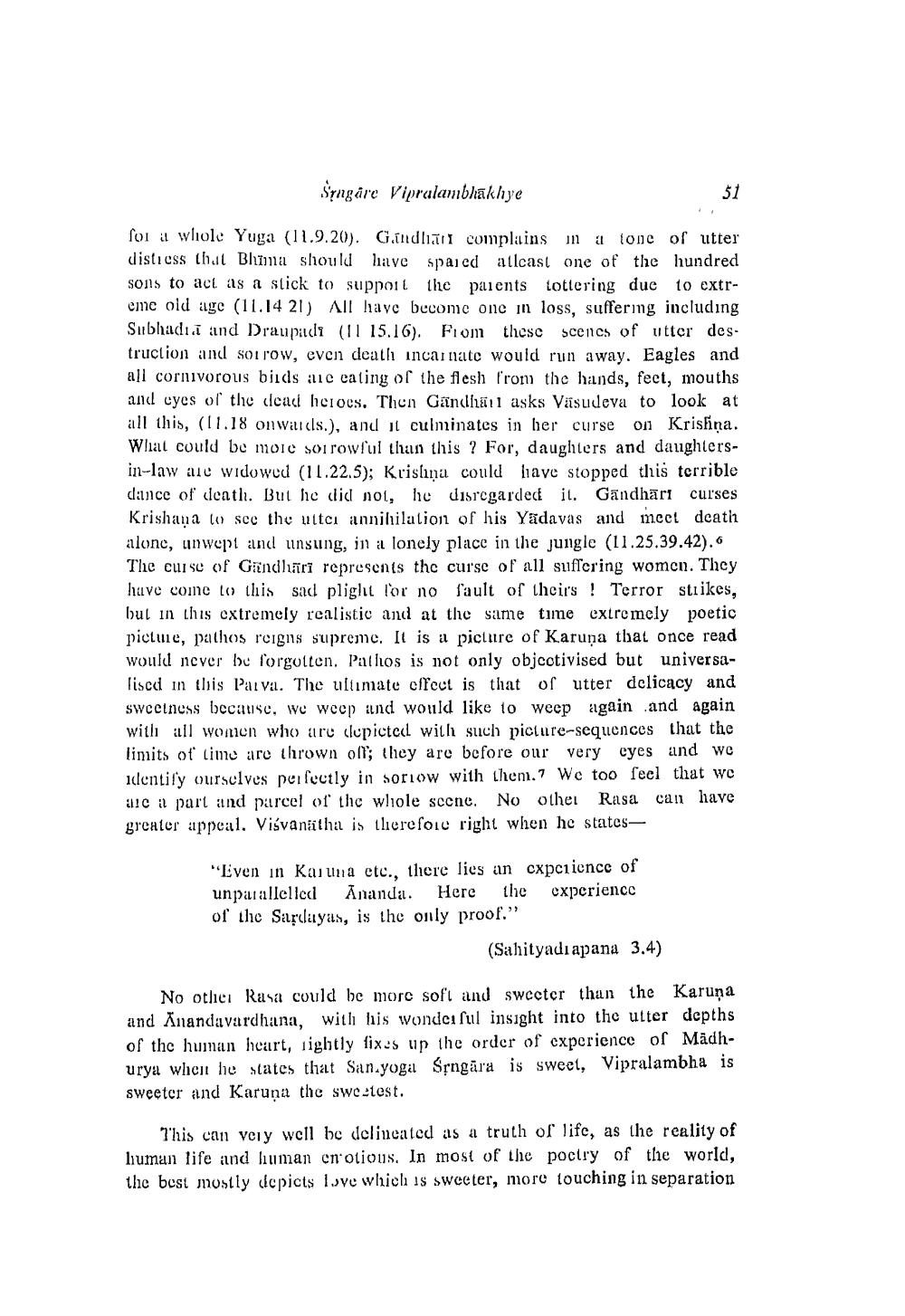________________
Syngäre Vipralambhākhye
51
for a wliolc Yuga (11.9.20). Gindlalt complains in a tone of utter distiess that Bhina should have spaid atlcast one of the hundred sons to act as a stick to support the parents Lottering due to extreme old age (11.14 21) All have become one in loss, suffering including Subhadicī and Draupadi (11 15.16). From these scenes of utter destruction and soulow, even death incarnate would run away. Eagles and all cornivorous bids aic cating of the flesh from the hands, fect, mouths and cyes of the dead heroes. Then Gandhu asks Väsudeva to look at all this, (11.18 onwards.), and it culminates in her curse on Krishiņa. What could be more sorrowful than this ? For, daughters and daughtersin-law ale widowed (11.22.5); Kristina could liave stopped this terrible dance of death. But he did not, he disregarded it. Gandhāri curses Krishana lo sce the uttci annihilation of his Yadavas and meet death alone, unwept and insung, in a lonely place in the jungle (11.25.39.42). 6 The curse of Gandhari represents the curse of all suffering women. They have come to this sad plight l'or no fault of their's ! Terror strikes, but in this extremely realistic and at the same time extremely poetic pictue, pathos reigns supreme. It is a picture of Karuņa that once read would never be forgotten. Pathos is not only objcctivised but universalised in this Paiva. The ultimate effect is that of utter delicacy and sweetness because, we weep and would like to weep again and again with all women who are depicted with such picture-sequences that the limits of time are thrown olt; they are before our very eyes and we identify ourselves perfectly in sorrow with them. We too feel that we ac a part and parcel of the wliole scene. No othei Rasa can have greator appeal. Visvanatha is therefore right when he states
"Even in Karma ctc., there lies an experience of unparallelled Ananda. Here the experience of the Sardayas, is the only proof."
(Sahityadi apana 3.4)
No other Rasa could be more soft and sweeter than the Karuna and Anandavardhana, with his wonderful insight into the utter depths of the human heart, lightly fixes up the order of experience of Madhurya when he states that San.yoga Sțngāra is sweet, Vipralambha is sweeter and Karuņa the sweetest.
This can very well be delineated as a truth of life, as the reality of liuman life and human cnotious. In most of the poetry of the world, the best mostly depicts Ive which is sweeter, moro touching in separation




